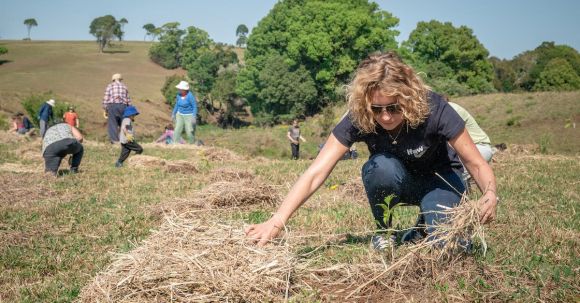Deforestation is a serious environmental issue that has far-reaching consequences for our planet. It leads to the loss of biodiversity, contributes to climate change, and disrupts ecosystems. However, there are strategies that can be implemented to reverse deforestation and restore habitats. In this article, we will explore some of these strategies and their potential impact.
1. Agroforestry: A Sustainable Approach
Agroforestry is a sustainable land-use system that combines agriculture and forestry practices. It involves planting trees alongside crops, providing multiple benefits. Trees help prevent soil erosion, improve water retention, and enhance soil fertility. They also provide shade and shelter for crops and create a more diverse and resilient ecosystem. By adopting agroforestry practices, farmers can increase their productivity while minimizing the need for deforestation.
2. Reforestation: Planting Trees for the Future
Reforestation is a crucial strategy for reversing deforestation. It involves planting trees in areas that have been cleared or degraded. Reforestation not only helps restore forests but also provides numerous ecological benefits. Trees absorb carbon dioxide, a major greenhouse gas, helping to mitigate climate change. They also act as a habitat for wildlife, promote biodiversity, and enhance ecosystem services such as water filtration and air purification.
3. Forest Landscape Restoration: Creating Connected Habitats
Forest landscape restoration aims to restore entire ecosystems, rather than just individual trees. It involves creating connected habitats that can support a wide range of species. This approach goes beyond planting trees and focuses on restoring the underlying ecological processes that sustain forests. By restoring degraded landscapes, we can create corridors for wildlife, improve water quality, and promote the recovery of native flora and fauna.
4. Community Engagement: Empowering Local Communities
Engaging local communities is crucial for the success of reforestation and habitat restoration efforts. By involving communities in decision-making processes, we can ensure that their needs and perspectives are taken into account. Furthermore, community-led initiatives can provide long-term solutions to deforestation. Programs that provide alternative livelihoods, such as sustainable agroforestry or eco-tourism, can incentivize local communities to protect and restore forests.
5. Policy and Governance: Creating Enabling Environments
Effective policy and governance frameworks are essential for reversing deforestation on a large scale. Governments can play a crucial role in creating enabling environments by implementing laws and regulations that protect forests and promote sustainable land-use practices. International agreements, such as the Paris Agreement and the Convention on Biological Diversity, provide a framework for global cooperation and action. By aligning policies and implementing strong governance structures, we can create a supportive environment for reforestation and habitat restoration.
In conclusion, reversing deforestation and restoring habitats is a complex but necessary task. By implementing strategies such as agroforestry, reforestation, forest landscape restoration, community engagement, and effective policy and governance, we can make significant progress in addressing this environmental challenge. The restoration of forests not only benefits the environment but also supports local communities and contributes to global efforts to combat climate change. It is a collective responsibility to protect and restore our forests for the well-being of both present and future generations.
